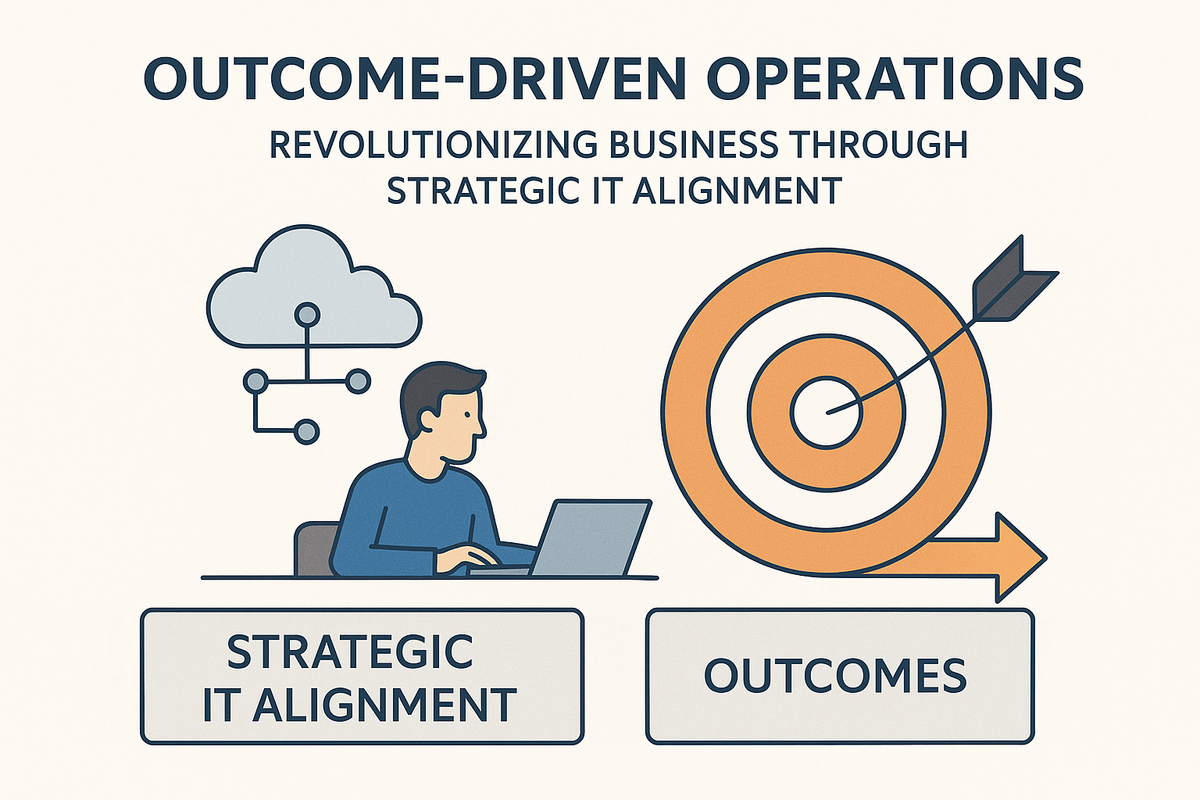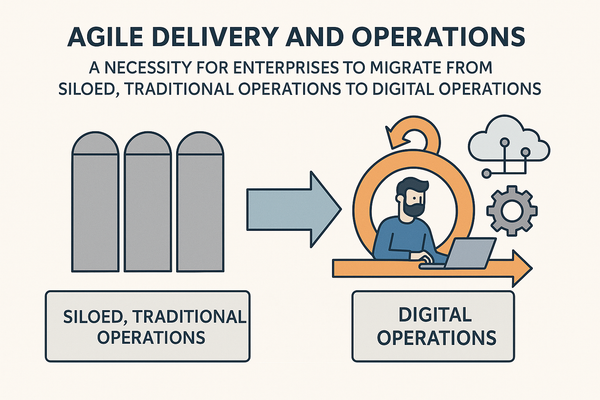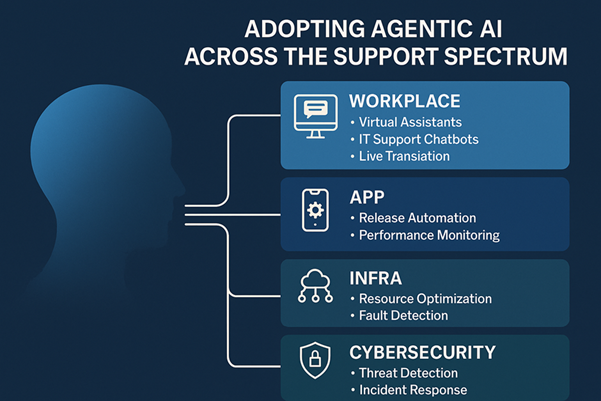Outcome-Driven Operations: Revolutionizing Business Through Strategic IT Alignment
This blog post delves into the essence of outcome-driven operations, examining its benefits, implementation strategies, and the role of IT service providers in facilitating this paradigm shift.

In today’s competitive business landscape, aligning IT with business operations is more critical than ever. As enterprises strive to innovate, reduce costs, and improve customer satisfaction, the concept of outcome-driven operations is emerging as a transformative approach. This blog post delves into the essence of outcome-driven operations, examining its benefits, implementation strategies, and the role of IT service providers in facilitating this paradigm shift.
Understanding Outcome-Driven Operations
Outcome-driven operations focus on delivering measurable business results rather than just completing tasks or projects. This approach shifts the focus from traditional process-oriented methods to outcomes that directly contribute to business success. Key performance indicators (KPIs) and metrics such as revenue growth, customer satisfaction, and market share become the primary benchmarks for assessing the effectiveness of operations.
Key Components of Outcome-Driven Operations
- Business Alignment: Ensuring that IT initiatives are fully aligned with the strategic goals of the business.
- Customer-Centricity: Prioritizing customer needs and outcomes in all operational activities.
- Data-Driven Decision Making: Leveraging data analytics to inform decisions and measure outcomes.
- Agility and Flexibility: Adapting quickly to changing business environments and requirements.
- Continuous Improvement: Regularly evaluating and refining processes to enhance outcomes.
The Role of IT in Outcome-Driven Operations
IT plays a pivotal role in enabling outcome-driven operations. By leveraging technology, businesses can streamline processes, enhance productivity, and deliver superior customer experiences. Key areas where IT can drive outcomes include:
- Automation: Implementing automated solutions to reduce manual efforts and increase efficiency.
- Analytics: Using data analytics to gain insights into business performance and customer behavior.
- Cloud Computing: Providing scalable and flexible IT resources to support dynamic business needs.
- Cybersecurity: Ensuring robust security measures to protect sensitive business data and maintain customer trust.
Implementing Outcome-Driven Operations
Transitioning to outcome-driven operations requires a strategic approach. Here are the steps to successfully implement this model:
Define Clear Outcomes: Establish specific, measurable, achievable, relevant, and time-bound (SMART) outcomes that align with business objectives. These outcomes should be communicated across the organization to ensure a shared understanding and commitment.
Develop a Roadmap: Create a detailed roadmap outlining the steps and resources needed to achieve the defined outcomes. This roadmap should include timelines, milestones, and key deliverables.
Engage Stakeholders: Involve key stakeholders from various departments to ensure their buy-in and support. Regular communication and collaboration are essential to keep everyone aligned and motivated.
Leverage Technology: Utilize advanced technologies such as artificial intelligence, machine learning, and the Internet of Things (IoT) to drive operational efficiency and innovation. These technologies can provide valuable insights and automate processes, enabling faster and more accurate decision-making.
Monitor and Measure Progress: Establish KPIs and metrics to track progress and measure the effectiveness of operations. Regularly review and analyze these metrics to identify areas for improvement and make necessary adjustments.
Foster a Culture of Continuous Improvement: Encourage a culture of continuous learning and improvement within the organization. Provide training and development opportunities to enhance employees’ skills and knowledge, enabling them to contribute more effectively to achieving outcomes.
It is important to note that this transformation is an iterative process. Ideally, it should be initiated with a small subset of business services within a Line of Business (LOB) and then gradually expanded. This approach allows for careful monitoring, adjustment, and refinement before scaling up the operations. Starting small helps to manage risks, gather valuable insights, and build momentum and confidence across the organization.
Benefits of Outcome-Driven Operations
Alignment with Customer Needs: Outcome-driven operations ensure that all business activities are aligned with customer-defined metrics, leading to higher customer satisfaction and loyalty. By understanding what customers are trying to achieve, companies can deliver products and services that meet their needs perfectly.
Improved Innovation Success Rate: ODI has been shown to have a five-fold improvement over the industry average in innovation success rates. This is because it helps companies avoid unnecessary pivoting and iteration by revealing all unmet customer needs before product concepts are defined.
Enhanced Cross-Team Collaboration: Outcome-driven operations facilitate top-down alignment, bottom-up innovation, and cross-team collaboration. This ensures that all teams are working towards the same goals, leading to better coordination and more effective use of resources.
Data-Driven Decision Making: Outcome-driven operations empower data-driven decision making by continuously evaluating progress towards goals and adjusting priorities accordingly. This approach helps in avoiding the "build trap" or "feature factory" syndrome, where companies focus on building features without understanding their impact on customer outcomes.
Competitive Advantage: By focusing on customer outcomes, companies can stay competitive and avoid being blindsided by new entrants who are disrupting the market. Outcome-driven operations help in anticipating and responding to market or customer changes more effectively.
Reference: Outcome Driven Organization
The Role of IT Service Providers in Outcome-Driven Operations
IT service providers play a crucial role in enabling and enhancing outcome-driven operations for their clients. These companies offer a range of services and solutions that can significantly impact a business's ability to implement and benefit from an outcome-driven approach.
Expertise in Digital Transformation
IT service providers bring extensive experience in digital transformation, which is often a key component of implementing outcome-driven operations. They can help businesses:
- Assess Current State: Evaluate existing systems, processes, and technologies to identify areas for improvement.
- Design Future State: Create a roadmap for digital transformation that aligns with desired business outcomes.
- Implement Solutions: Deploy new technologies and systems that enable outcome-driven operations.
Advanced Analytics and AI Capabilities
IT Service Providers have strong capabilities in advanced analytics and artificial intelligence, which are crucial for:
- Data-Driven Insights: Analyze large volumes of data to identify patterns and trends that can inform decision-making.
- Predictive Analytics: Forecast future outcomes based on historical data, helping businesses proactively address potential issues.
- AI-Powered Automation: Implement intelligent automation solutions that can improve efficiency and reduce errors in operational processes.
Customized Solutions for Outcome Measurement
IT service providers can develop and implement customized solutions for measuring and tracking outcomes. This might include:
- Dashboards and Visualization Tools: Create intuitive interfaces for monitoring key performance indicators (KPIs) and outcomes in real-time.
- Integration of Systems: Connect disparate systems to provide a holistic view of business operations and their impact on desired outcomes.
- Custom Software Development: Build bespoke applications that cater to specific outcome measurement needs of a business.
Industry-Specific Expertise
Many IT service providers have deep expertise in specific industries, allowing them to offer tailored solutions for outcome-driven operations. For example:
- Banking and Financial Services: Implement solutions for risk management, customer experience enhancement, and regulatory compliance.
- Healthcare: Develop systems for improving patient outcomes, optimizing resource allocation, and enhancing operational efficiency.
- Manufacturing: Deploy IoT and analytics solutions for predictive maintenance, supply chain optimization, and quality control.
Outcome-Based Pricing Models
IT service providers are increasingly offering outcome-based pricing models, aligning their services directly with the client's desired business outcomes. This approach:
- Shares Risk: The service provider takes on some of the risks associated with achieving the desired outcomes.
- Aligns Incentives: Both the client and the service provider are motivated to achieve the same goals.
- Focuses on Value: The emphasis shifts from inputs (time and resources) to outputs (measurable business outcomes).
Conclusion
The disconnect between IT and business in enterprises is a longstanding issue, but it is not insurmountable. By shifting the focus from traditional IT metrics to business outcomes, enterprises can ensure that their IT investments drive significant business value. Service providers, by aligning their services with business objectives and demonstrating tangible business benefits, can play a pivotal role in bridging this gap. This alignment will not only enhance IT's role as a strategic enabler but also create a collaborative environment where IT and business work in tandem to achieve shared goals.
Outcome-Driven Operations represent a powerful approach to aligning business activities with customer needs and organizational goals. By focusing on measurable outcomes rather than just outputs, companies can drive innovation, improve customer satisfaction, and enhance operational efficiency.
IT service providers play a crucial role in enabling outcome-driven operations. They bring expertise in digital transformation, advanced analytics, and industry-specific solutions that can help businesses implement and benefit from this approach. Moreover, their shift towards outcome-based pricing models demonstrates their commitment to aligning their services with their clients' business goals.
As businesses continue to evolve in an increasingly competitive landscape, adopting an outcome-driven mindset, supported by the right IT service partners, will be crucial for staying competitive and driving long-term success. By leveraging the expertise and capabilities of IT service providers, organizations can accelerate their journey towards becoming truly outcome-driven, realizing tangible business benefits and creating sustainable competitive advantages.


